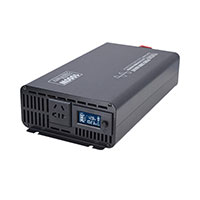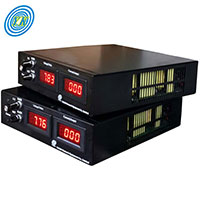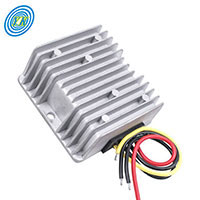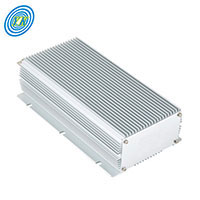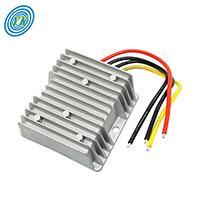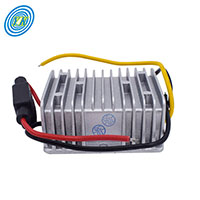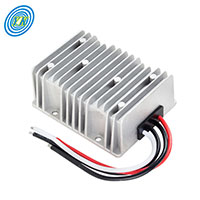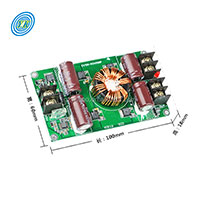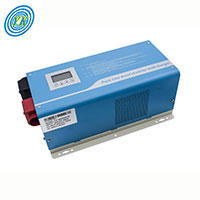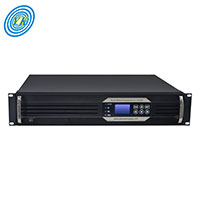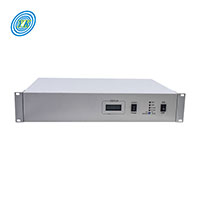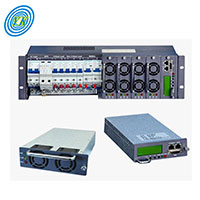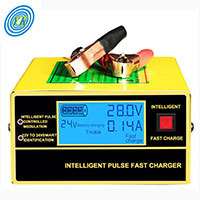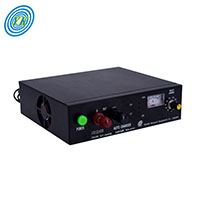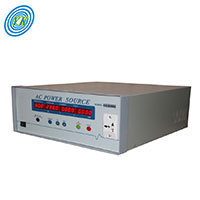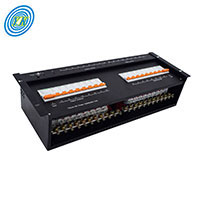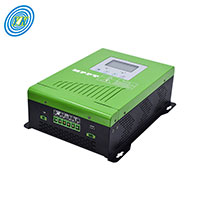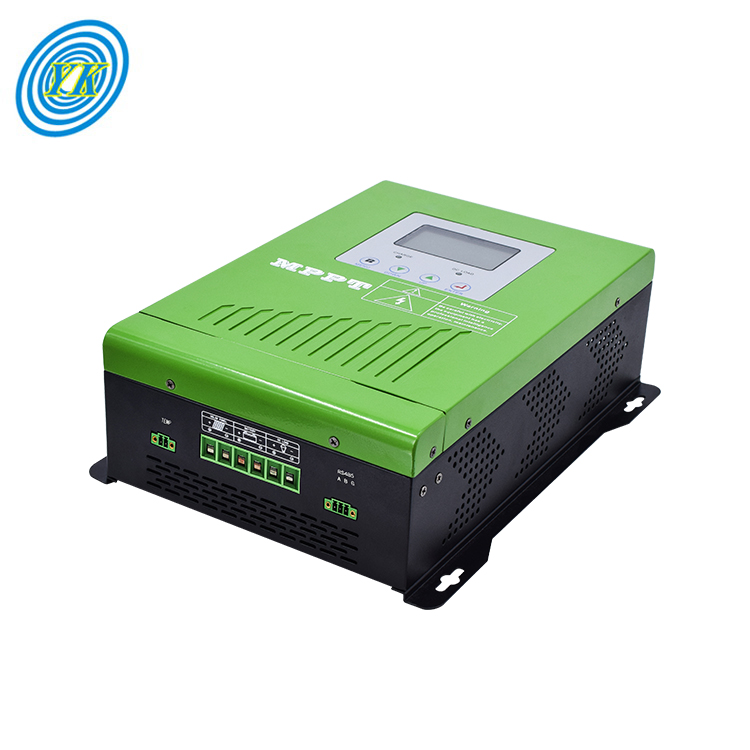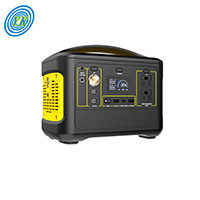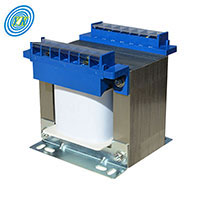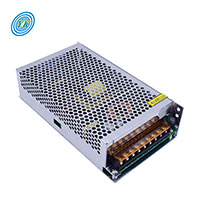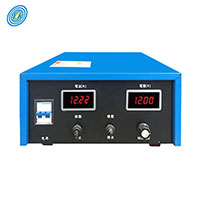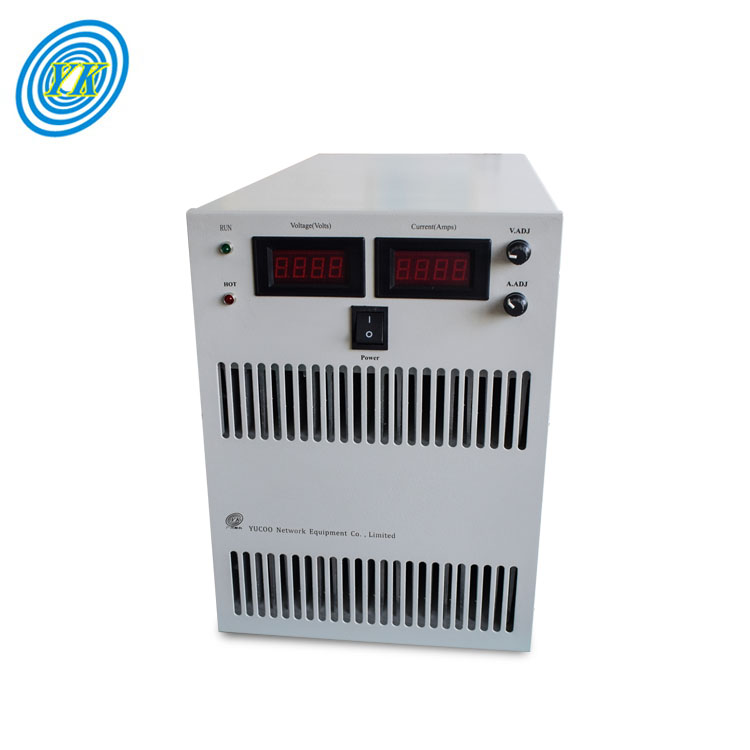
Adjustable DC Power Supplies: A Comprehensive Guide to Types, Applications, and Troubleshooting
Click: 954 Date: 03/28/2024 3::06::33 PM
Adjustable DC Power Supplies: A Comprehensive Guide to Types, Applications, and TroubleshootingExploring the Flexibility of Adjustable DC Power SuppliesAdjustable DC power supplies are a cornerstone of modern electronics, offering unparalleled control and flexibility for engineers and technicians. These devices are not just about providing a steady stream of power; they are about enabling precise control over voltage and current, making them indispensable for a wide range of applications, from prototyping to testing and development.Control Flexibility: The Heart of AdjustabilityAt the core of an adjustable DC power supply's appeal is its control flexibility. This means having separate controls for voltage and current, allowing for precise adjustments to meet specific requirements. For instance, a multi-turn control or a fine-tune control for voltage ensures that the output voltage can be set to the exact value needed, enhancing the efficiency and accuracy of experiments and tests. Additionally, the ability to lock voltage and current settings at specific values adds an extra layer of safety, preventing accidental changes that could disrupt ongoing operations.Safety and Precision: Essential FeaturesSafety is a paramount concern when working with electrical equipment. Adjustable DC power supplies address this by allowing users to set the span of the voltage output control, thereby defining the minimum and maximum values. This feature ensures that the output voltage remains within a safe range, protecting both the system and the user from potential damage.Multiple Outputs: Expanding CapabilitiesFor applications requiring more than one output, adjustable DC power supplies offer isolated outputs. This feature not only enhances the functionality of the device but also allows for the simultaneous operation of multiple outputs, either separately or in parallel. A tracking mode further enhances this capability by enabling the control of both outputs with a single control, streamlining the setup process and improving efficiency.PC Control Functions: Automating TestsIn the realm of benchtop applications, the inclusion of PC control functions can significantly boost productivity. By automating repetitive tests, users can save time and reduce the risk of human error. This feature is particularly beneficial in labs where consistency and precision are paramount.Linear Output Regulation: The Right Choice for Benchtop WorkWhen considering the type of power supply, linear output regulation stands out as a preferred choice for benchtop work. Unlike switching supplies, which are smaller and offer more control features, linear supplies are known for their lower output noise specifications. This characteristic is crucial for applications where power density is not a concern, making linear supplies the go-to choice for many engineers.Output Enable/Disable: Flexibility in OperationThe output enable/disable feature offers a convenient way to switch the output on or off without completely turning off the supply. This flexibility allows users to set up the supply without worrying about how adjustments might affect the load, providing a seamless operational experience.In conclusion, the flexibility of adjustable DC power supplies is a testament to their versatility and utility in various fields. From the control flexibility that allows for precise voltage and current adjustments to the safety features that protect against potential damage, these devices are designed to meet the needs of engineers and technicians with precision and efficiency. Whether you're working on a prototype, conducting tests, or developing new technologies, an adjustable DC power supply is your key to success.Understanding the distinction between linear and switching power supplies is crucial for anyone involved in electronics, as these two types of power supplies serve different purposes and have unique characteristics. This article delves into the fundamental differences between linear and switching power supplies, exploring their operational principles, efficiency, noise levels, and applications.Linear Power Supplies: The Classic ApproachLinear power supplies have been a staple in electronics for decades, known for their low noise output and ability to provide clean, stable DC voltages. These power supplies work by using a transformer to step down the input voltage, followed by rectification and smoothing processes to produce a clean DC output. The key advantage of linear power supplies is their ability to offer excellent regulation and low ripple, making them ideal for applications requiring high precision, such as audio equipment, medical devices, and signal processing systems. However, the downside is their inefficiency, as they convert a significant portion of the input power into heat, leading to larger, heavier units with lower efficiency compared to their switching counterparts.Switching Power Supplies: The Modern AlternativeSwitching power supplies, on the other hand, have revolutionized the power supply landscape with their high efficiency and compact size. They operate by converting the input voltage into a high-frequency pulse train, which is then rectified and smoothed to produce the desired DC output. This method allows for the use of smaller, lighter components, resulting in power supplies that are more energy-efficient and produce less heat. Switching power supplies are capable of both stepping up and stepping down voltages, making them versatile for a wide range of applications, including computers, mobile devices, and industrial equipment. However, the high-frequency switching can introduce noise into the system, which can be mitigated with proper filtering.Key Differences and ConsiderationsEfficiency and Size: Switching power supplies are generally more efficient and compact than linear power supplies, making them suitable for portable and space-constrained applications.Noise Levels: Linear power supplies produce less noise, making them preferred for applications where low noise is critical, such as audio equipment and medical devices. Switching power supplies, while more efficient, can introduce noise due to the high-frequency switching.Cost and Complexity: Linear power supplies are generally less expensive and simpler in design, making them a cost-effective choice for low-power applications. Switching power supplies, while more expensive, offer higher efficiency and are more suitable for high-power applications.Applications: Linear power supplies are ideal for precision and low-noise applications, while switching power supplies are preferred for high-efficiency, high-power applications, including portable electronics and industrial equipment.Conclusion: Choosing the Right Power SupplyThe choice between a linear and a switching power supply depends on the specific requirements of the application. For precision and low-noise applications, a linear power supply is the preferred choice. However, for high-efficiency, high-power applications, a switching power supply offers the best solution. Understanding the operational principles, efficiency, noise levels, and applications of both types of power supplies is essential for selecting the most suitable power supply for any given project.In the realm of research and development, adjustable DC power supplies play a pivotal role in facilitating precise control over voltage and current levels. These power supplies are indispensable for powering experimental setups, testing electronic components, and conducting a myriad of scientific investigations across various fields. Here, we delve into the intricate applications of adjustable DC power supplies in research and development environments, highlighting their significance in laboratories, institutes, and research facilities such as particle accelerators.Adjustable DC power supplies are particularly beneficial in testing and development environments where precise control over the power output is required. They offer greater flexibility and control compared to traditional fixed-output power supplies, making them an invaluable tool for researchers and engineers. This flexibility is crucial for conducting experiments that demand specific voltage and current levels, ensuring that the experimental conditions are accurately replicated.In the field of electronics, adjustable DC power supplies are used for testing electronic components, powering circuits, and driving motors. They are vital for the proper functioning of electronic devices and systems, providing the necessary power for critical onboard electronics and control units. This application underscores the importance of adjustable DC power supplies in ensuring the reliability and performance of electronic devices under various operating conditions.Moreover, adjustable DC power supplies are fundamental in medical and biological research. They are used for applications such as electrophoresis, cell separation, and imaging techniques like MRI and CT. These power supplies provide the necessary power for diagnostic and research equipment, enabling researchers to conduct precise and reliable studies in the medical and biological fields.In the energy and environmental sectors, adjustable DC power supplies are used in battery simulation, development of renewable energy systems, and fusion energy generation. They are crucial for testing and monitoring equipment that require stable and adjustable DC power sources, ensuring the efficiency and safety of these systems.In summary, adjustable DC power supplies are a cornerstone of research and development, offering the flexibility and control needed to conduct precise and reliable experiments across a wide range of fields. Their applications in electronics, medical research, and energy systems highlight their indispensable role in advancing scientific knowledge and technological innovation.Safety and Specifications: Key Considerations for Adjustable DC Power SuppliesUnderstanding Safety MeasuresWhen operating adjustable DC power supplies, it's crucial to adhere to safety precautions to prevent minor electric shocks, fires, or product failure. Avoid disassembling, modifying, or repairing the product, and refrain from touching the terminals while power is being supplied. Ensure the terminal screws are tightened with the specified torque to prevent minor burns and potential fire hazards. Additionally, avoid using the power supply in locations subject to excessive dust, where liquids or foreign matter might enter, or in direct sunlight, as these conditions can compromise the product's safety and performance 1.Specifications and ComplianceSelecting the right power supply requires understanding its specifications, including output regulation, ripple, space/dimensions, enclosure/cooling/fan requirements, and temperature grade. These factors influence the power supply's ability to meet your application's needs, such as whether it requires a regulated output, the acceptable level of output ripple, and the necessary cooling mechanisms. It's also essential to consider the power supply's ability to withstand harsh temperature conditions and to meet specific standards like 60601, IP20, IP22, etc., which are crucial for ensuring compliance with local legislation and for identifying products that have been tested for safety 3.Derating and Environmental FactorsEnvironmental factors like altitude and temperature can affect the power supply's performance, leading to a phenomenon known as derating. This means that some power may be lost, affecting the power supply's efficiency and safety. Therefore, it's important to choose a power supply that can operate effectively under the specific environmental conditions of your application 3.Safety Standards and ClassificationsAdjustable DC power supplies must comply with relevant safety standards to protect against fire, electric shock, and injury. These standards are administered by national or international agencies and are crucial for ensuring that power supplies are safe for use. Understanding these standards, such as IEC 60950 and IEC 60601, is essential for selecting a power supply that meets the highest levels of safety and performance. Additionally, knowing the different classes of equipment based on their power supply isolation capabilities, such as Class I, II, and III, helps in selecting the appropriate power supply for your application 4.ConclusionOperating adjustable DC power supplies safely and effectively requires a thorough understanding of safety measures, specifications, compliance with standards, and environmental considerations. By adhering to these guidelines, you can ensure that your power supply operates safely and meets the needs of your application, thereby preventing potential hazards and ensuring the longevity of your equipment.Troubleshooting and Optimization Techniques for Adjustable DC Power Supplies"Adjustable DC power supplies are essential tools in various fields, from electronics to research and development. However, like any electronic device, they can encounter issues that affect their performance. Understanding and applying troubleshooting and optimization techniques are crucial for maintaining the reliability and efficiency of these power supplies. This article explores common issues, troubleshooting steps, and optimization strategies for adjustable DC power supplies.Identifying Common IssuesAdjustable DC power supplies can face a range of issues, from minor fluctuations in output voltage to complete failure. Common problems include:Output Voltage Fluctuations: This occurs when the output voltage deviates from the set value, often due to load changes or component failures.Inadequate Output Current: The power supply may not provide enough current for the connected device, leading to underperformance or damage.Overheating: Components within the power supply can overheat, especially under heavy loads, which can lead to failure.Component Failures: Over time, components like capacitors, resistors, and semiconductors can fail, affecting the power supply's performance.Noise and Ripple: High-frequency noise or ripple in the output voltage can degrade the performance of sensitive electronic devices.Troubleshooting StepsInitial Inspection: Begin by visually inspecting the power supply for any obvious signs of damage, such as burnt components or loose connections.Check Component Values: Use a multimeter to verify the values of key components, such as capacitors and resistors, to ensure they match the specifications.Measure Output Voltage and Current: Use the multimeter to measure the actual output voltage and current, comparing them to the expected values.Test Under Different Load Conditions: Changing the load on the power supply can help identify issues related to current regulation or voltage stability.Component Replacement: If specific components are found to be faulty, replace them with new ones that match the original specifications.Optimization TechniquesOptimizing the performance of an adjustable DC power supply involves enhancing its efficiency, stability, and reliability. Here are some strategies:Upgrade Components: Replacing aging or underperforming components with higher-quality alternatives can significantly improve performance.Implement Active Voltage Regulation: For critical applications, consider using active voltage regulation techniques to maintain a stable output voltage under varying loads.Use Quality Filtering: Employing advanced filtering techniques, such as LC filters or active filters, can reduce noise and ripple in the output voltage.Regular Maintenance: Regularly cleaning and inspecting the power supply can prevent issues before they become critical.ConclusionTroubleshooting and optimizing adjustable DC power supplies require a systematic approach to diagnosing and resolving issues. By following the steps outlined above and applying optimization techniques, users can ensure their power supplies operate reliably and efficiently, supporting their electronic projects and research endeavors.
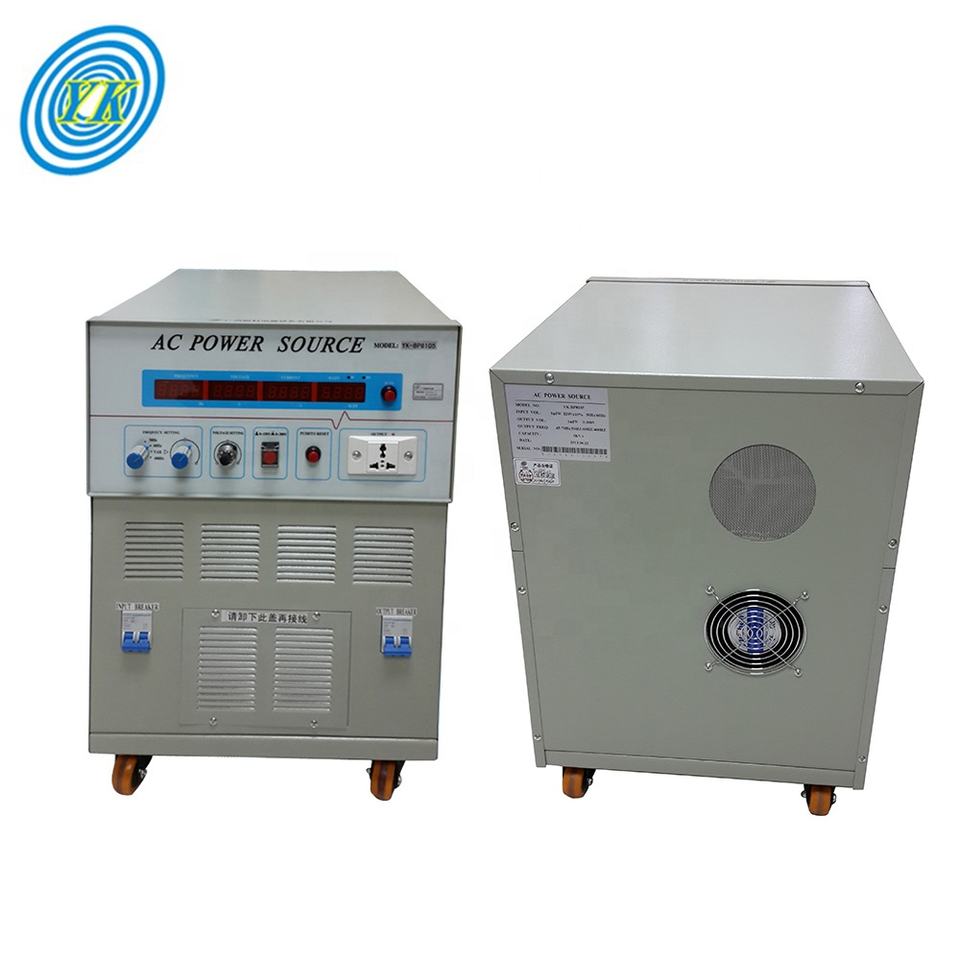
Frequency Converters: From Basics to Innovations
Click: 726 Date: 03/25/2024 4::25::35 PM
Frequency Converters: From Basics to InnovationsTo delve into the essentials of frequency conversion, let's explore the core concepts and mechanisms that underpin the operation of frequency converters. This exploration will encompass the fundamental principles of time and frequency, the role of oscillators and resonators, and the techniques used for frequency measurement and conversion.Time and Frequency FundamentalsAt the heart of frequency conversion lies the understanding of time and frequency. Time is measured in seconds, milliseconds, microseconds, nanoseconds, and picoseconds, with the second being the standard unit. Frequency, on the other hand, is the reciprocal of time, indicating the number of cycles or events per second. This relationship between time and frequency is crucial for converting between different frequency scales.Oscillators and ResonatorsOscillators and resonators are the building blocks of frequency conversion. An oscillator is an energy source that produces a periodic event at a constant rate, known as the resonance frequency. The resonator, which can be a pendulum in a clock or an atomic oscillator, is what actually oscillates at this frequency. The quality of an oscillator is determined by its quality factor (Q), which is the ratio of the resonance frequency to the resonance width. A higher Q indicates a more stable oscillator, capable of maintaining its frequency over time.Measurement and Conversion TechniquesFrequency conversion involves adjusting the frequency of a signal to match a desired standard. This can be achieved through various techniques, including frequency dividers and mixers. Dividers are simpler and more versatile, allowing for easy adjustment to different frequencies. Mixers, while more complex and expensive, offer a higher signal-to-noise ratio and are capable of converting a wide range of frequencies. The choice between these methods depends on the specific requirements of the application.By understanding these foundational concepts and techniques, one can grasp the essentials of frequency conversion, laying the groundwork for further exploration into the applications and innovations in this field.Frequency converters play a pivotal role in various industries, significantly enhancing efficiency, power density, and overall performance of electrical systems. These devices are integral to consumer electronics, electric vehicles, and LED drivers, where their high efficiency and power density are crucial. The advancement in power conversion technology, particularly with the introduction of wide-bandgap (WBG) devices, has led to an increase in the frequency of power electronic converters, offering improved performance through reduced switching loss. This evolution underscores the importance of frequency converters in modern technology, from enhancing the efficiency of electric motors to facilitating energy savings in industrial processes.In the realm of electric motors, frequency converters are designed to control speed and torque with maximum efficiency across a broad spectrum. They offer comprehensive motor protection, including safeguards against short-circuits, overcurrent, and overheating. Additionally, frequency converters enable dynamic engine braking, precise control of motor operation, and the adjustment of process parameters to significantly reduce energy consumption. This functionality is particularly beneficial in applications where motor speed adjustments can lead to substantial energy savings, such as in fans, pumps, and conveyors.Moreover, frequency converters contribute to process stability and energy efficiency by allowing for the automatic control of rotational speed of drive mechanisms. This capability ensures faster and more accurate response to reference values and disturbances, leading to customizable transient curves for specific tasks. The ability to adjust process parameters by changing motor speed, rather than through traditional methods, significantly reduces power consumption, highlighting the role of frequency converters in optimizing energy use in various industrial applications.In summary, frequency converters are not just technological advancements; they are critical components that drive efficiency, power density, and energy savings across a wide range of industries. Their applications extend from consumer electronics to electric vehicles and industrial processes, underscoring their significance in modern technology and engineering. The future of frequency conversion is poised for significant advancements, driven by a surge in research and development efforts aimed at enhancing the capabilities and applications of frequency converters. This article delves into the innovative strides being made in the field, highlighting the potential for growth and the transformative impact of these technologies on various industries.Emerging Technologies and Market GrowthThe global frequency converter market is projected to witness a remarkable growth, with the value expected to rise from US25.90���������2024���� 65 billion by 2034, showcasing a promising CAGR of 9.60% over the next decade. This growth is fueled by the increasing use of frequency converters in offshore wind technology, which is anticipated to observe significant opportunities due to a reduction in offshore wind power prices and expansion in global capacities. Additionally, the market is driven by the expansion of the energy and manufacturing sector in emerging countries, leading to the establishment of renewable energy plants and industries in distribution networks and power transmission.Innovations in Frequency ConversionKey players in the industry are continuously innovating, developing the latest and improved versions of converters. These advancements include features like smaller size, higher efficiency, and advanced functionalities to attract new customers. For instance, Mitsubishi Electric Corporation received a contract to distribute a 300 MW Voltage Source Converter (VSC) in Hamamatsu, Shizuoka prefecture for the Shin-Sakuma Frequency Converter Station, showcasing the company's commitment to innovation. Siemens also announced the introduction of high-performance frequency converters to enter the Sinamics family, featuring clean power technology, indicating the industry's move towards more sustainable solutions.Market Segmentation and Future DirectionsThe frequency converter market is segmented by type and application, with the rotary frequency converter projected to register a CAGR of 9.3% through 2034. The aerospace and defense segment is anticipated to expand at a CAGR of 9.1% through 2034, highlighting the critical role of frequency converters in power electronics applications in military aircraft. The United States frequency converter industry is forecast to lead the global market by US$ 11.7 billion by 2034, with Europe and the Asia Pacific also showing significant growth.Challenges and OpportunitiesDespite the promising growth, the market faces challenges such as the difference in electrical standards prevailing in several nations and the volatility in the price of raw materials used in the manufacturing of frequency converters. However, these challenges also present opportunities for innovation and improvement, driving the industry towards more efficient and cost-effective solutions.ConclusionThe future of frequency conversion is bright, with ongoing research and development efforts promising to enhance the capabilities and applications of frequency converters. As the market continues to grow, driven by technological advancements and increasing demand across various sectors, the industry is poised to play a pivotal role in shaping the future of energy and power systems.
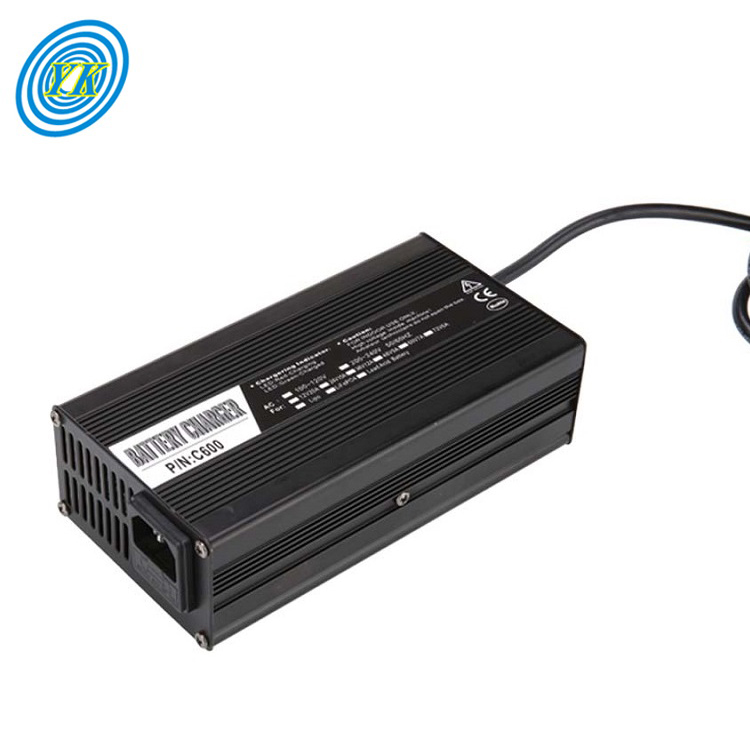
Mastering the Art of Battery Charging: A Comprehensive Guide to Types, Tips, and Safety
Click: 790 Date: 03/21/2024 4::32::56 PM
Mastering the Art of Battery Charging: A Comprehensive Guide to Types, Tips, and SafetyThe journey of battery charging technology has been nothing short of revolutionary, transforming from rudimentary concepts to sophisticated, energy-dense solutions that power our modern world. This article delves into the fascinating evolution of battery charging, tracing its roots from the early days of electricity to the cutting-edge advancements of today.The Dawn of Electricity and the First BatteriesThe story of battery charging begins with the invention of the voltaic pile by Alessandro Volta in 1800, inspired by the electric discharge observed in electric fish. This pile, consisting of copper and zinc discs separated by brine-soaked cloth, marked the birth of the first electric battery capable of providing a steady current to a circuit. The era of rechargeable batteries truly began with the development of lead-acid batteries by Gaston Planté in 1859, which were the first to be recharged and used for practical applications, such as illuminating train carriages.The Transition to Portable ElectronicsThe 20th century saw significant advancements in battery technology, with the introduction of alkaline batteries in the 1950s. These batteries, based on the reaction between zinc and manganese dioxide, were a game-changer, offering improved capacity and laying the groundwork for the era of portable electronics. The development of alkaline batteries paved the way for the proliferation of devices from remote controls to transistor radios, marking the beginning of a new era where batteries became an integral part of our daily lives.The Advent of Lithium-ion BatteriesThe introduction of lithium-ion (Li-ion) batteries in 1991 by scientists like John B. Goodenough and Akira Yoshino marked a pivotal moment in battery charging history. These batteries, known for their small size, high voltage, and charge storage, revolutionized the landscape of portable electronics and electric vehicles. The cost of Li-ion batteries has since decreased significantly, making them a critical technology in the quest for zero-emissions transport and the information age.The Future of Battery Charging: Solid-State Batteries and BeyondAs we look towards the future, the focus is shifting towards solid-state batteries, which replace the liquid electrolyte found in traditional lithium-ion batteries with solid materials like ceramics. This innovation promises to pack more energy into a smaller space, potentially improving the range of electric vehicles and reducing charging times. Additionally, solid-state batteries are considered safer due to the elimination of flammable solvents used in electrolytes.Conclusion: The Evolution and Impact of Battery ChargingFrom the humble beginnings of the voltaic pile to the sophisticated advancements of solid-state batteries, the evolution of battery charging has been nothing short of remarkable. This journey has not only transformed how we power our devices but also set the stage for a sustainable and energy-efficient future. As technology continues to advance, the future of battery charging holds exciting possibilities, promising even more efficient, safe, and environmentally friendly solutions.In the quest for portable power solutions, three distinct charging technologies stand out: USB chargers, wireless chargers, and solar chargers. Each offers unique advantages and caters to different needs, making them essential tools for today's tech-savvy world.USB Chargers: The StandardUSB chargers are the most common type of charger, found in nearly every electronic device. They are compact, easy to use, and widely compatible with a vast array of devices. However, their reliance on a power source means they are not ideal for use in remote or power-scarce locations. USB chargers are best suited for charging devices at home, office, or any place with a readily available power outlet.Wireless Chargers: The Future of ConvenienceWireless chargers offer a more convenient charging experience, eliminating the need for cables. They are particularly useful for devices like smartphones and tablets, which can be charged without the hassle of tangling cables. Wireless chargers are ideal for everyday use, providing a seamless charging experience without the clutter of cables. However, their charging speed is generally slower compared to USB chargers, and they require a compatible charging pad or mat.Solar Chargers: The Green AlternativeSolar chargers are a step towards sustainable energy use, harnessing the power of the sun to charge devices. These chargers are lightweight, portable, and can be used outdoors, making them perfect for camping, hiking, or any outdoor activity. Solar chargers are compatible with a wide range of devices, including smartphones, tablets, and even some laptops. They are an excellent choice for those looking to reduce their reliance on traditional power sources and contribute to environmental sustainability. However, their charging speed can vary significantly depending on the amount of sunlight, and they may not be as efficient in cloudy or overcast conditions.Conclusion: Choosing the Right ChargerThe choice between USB, wireless, and solar chargers depends on your specific needs and circumstances. USB chargers are the most versatile and widely compatible, making them a safe choice for everyday use. Wireless chargers offer convenience and eliminate the need for cables, ideal for devices like smartphones and tablets. Solar chargers are the green alternative, perfect for outdoor activities and those looking to reduce their environmental impact. Each type of charger has its strengths and weaknesses, and the best choice depends on your specific use case and preferences.In the quest to power up your devices efficiently and safely, selecting the right battery charger is a pivotal step. This article delves into the essential tips for choosing the perfect charger, focusing on key factors such as charging speed, capacity, and safety features.Charging Speed: Prioritizing EfficiencyIn our fast-paced world, the convenience of fast charging is paramount. Look for chargers that boast features like Quick Charge or Power Delivery, designed to charge your devices swiftly, ensuring they're ready to use when you are. These technologies are a game-changer, offering a significant boost in charging efficiency and reducing downtime.Capacity: Ensuring Adequate Power SupplyThe capacity of a charger is a critical factor to consider. It determines how much charge it can deliver to your devices, ensuring they remain powered throughout the day. Assess your daily usage patterns and select a charger with a capacity that meets your needs, whether you're looking for a quick top-up or a more substantial power boost.Safety Features: Protecting Your DevicesSafety should be your top priority when choosing a battery charger. Opt for chargers equipped with safety mechanisms such as overcurrent protection, temperature control, and surge protection. These features not only safeguard your devices from damage but also extend the lifespan of your charger, making it a worthwhile investment.Compatibility: A Versatile SolutionNot all chargers are created equal when it comes to device compatibility. It's crucial to select a charger that can accommodate a wide range of devices, from smartphones and tablets to laptops and other gadgets. A versatile charger eliminates the need for multiple chargers, streamlining your charging needs and reducing clutter.Build Quality and Brand Reputation: Durability and TrustworthinessInvesting in a high-quality charger is a wise decision for long-term satisfaction. Pay attention to the build materials, design, and overall durability of the charger. Additionally, consider the reputation of the brand. Established brands often prioritize quality and reliability, offering chargers that have undergone rigorous testing to meet industry standards.Intelligent Charging: Optimizing Your Charging ExperienceIn the era of smart technology, why settle for a basic charger? Choose a charger with intelligent charging capabilities that can adapt to the specific needs of your devices. Smart chargers can recognize the type of device connected and adjust the charging voltage accordingly, optimizing the charging process and prolonging battery life.Portability: The Key for On-the-Go ChargingFor those constantly on the move, the portability of a charger is a crucial consideration. Opt for a charger that is compact and lightweight, making it easy to carry in your bag or pocket. Portable chargers, also known as power banks, are ideal for those who need a reliable power source while traveling or during outdoor activities.Beyond the Basics: Enhancing Your Charging Experience with AccessoriesIn the realm of battery charging, accessories play a pivotal role in enhancing the user experience, ensuring efficiency, and extending the lifespan of both the charger and the device being charged. This article delves into the world of charger accessories, exploring how they can transform your charging routine into a more streamlined, efficient, and enjoyable process.1. The Power of CablesCables are the unsung heroes of charging, connecting devices to their chargers. However, they are often overlooked in the quest for the latest and greatest charging technology. High-quality cables can significantly impact the charging speed and reliability. Look for cables that are durable, have a good conductivity rate, and are designed to handle the power requirements of your device. A well-chosen cable can ensure that your device charges quickly and safely, without the risk of overheating or damage.2. Adapters: Your Key to CompatibilityIn a world where devices come in all shapes and sizes, adapters serve as the bridge between your charger and your device. Whether you're traveling abroad and need a different plug or simply have a device with a unique charging port, adapters make it possible to charge your device without the hassle of finding a compatible charger. They are essential for maintaining the flexibility and convenience of your charging setup, allowing you to charge your devices anywhere, anytime.3. Stands and Docks: Elevating Your Charging ExperienceFor those who prefer a more hands-free approach to charging, stands and docks offer a convenient solution. These accessories not only provide a stable surface for your device to rest on but also often include additional features such as USB ports, HDMI connections, and even built-in speakers. They are perfect for charging devices like smartphones, tablets, and laptops while you work, play, or simply relax.4. The Future of Charging: Wireless SolutionsAs technology advances, so does the charging landscape. Wireless charging is set to revolutionize the way we charge our devices, offering a seamless and hassle-free charging experience. Wireless charging eliminates the need for cables and adapters, making it easier than ever to charge your devices. It also reduces the risk of damage from tripping over cables or dropping your device. With wireless charging, you can simply place your device on a compatible charger or dock, and it will charge automatically.5. Accessories for a Greener ChargeIn today's environmentally conscious world, choosing eco-friendly charging accessories is not just a matter of personal preference but also a responsible choice. Look for charging cables made from recycled materials, adapters designed to reduce energy consumption, and stands and docks that are energy-efficient. These accessories not only help you charge your devices more sustainably but also contribute to a healthier planet.In conclusion, charger accessories are more than just add-ons; they are tools that can significantly enhance your charging experience, making it more efficient, convenient, and environmentally friendly. Whether you're looking for the best cable, adapter, stand, dock, or even a wireless charging solution, investing in high-quality charger accessories can transform your charging routine into a more enjoyable and sustainable process."Safety First: Preventing Overcharging and Ensuring Your Devices Stay Protected"In the realm of battery charging, safety is paramount. Overcharging and overheating are common issues that can lead to device damage, fire, and even explosion. This article delves into the critical aspects of battery charging safety, providing practical tips and best practices to keep your devices safe and operational.Understanding the RisksBatteries, especially lithium-ion batteries, are susceptible to overheating and fire due to the high energy density. Overcharging can cause the battery to heat up excessively, potentially leading to thermal runaway, where the battery's temperature continues to rise uncontrollably. This can result in a fire or even an explosion, posing a significant risk to both the device and its user.Preventing OverchargingTo mitigate the risk of overcharging, it's essential to use chargers that are specifically designed for your device. Manufacturer-approved chargers are equipped with safety features, such as auto-shutoff mechanisms, which can prevent overcharging by automatically stopping the charging process once the battery is full. Additionally, establishing a charging protocol or schedule can help ensure that no battery is left unattended or overcharged for an extended period.Ensuring Proper Charging PracticesUse Approved Chargers: Always use chargers that are approved by the device's manufacturer. Unapproved chargers may not have the necessary safety features and can lead to overcharging.Avoid Overnight Charging: Do not leave devices charging overnight. While most devices are designed to stop charging once the battery is full, overcharging can still occur if the charger overheats.Charge in a Safe Environment: Ensure that the charging area is well-ventilated and free from flammable materials. Avoid charging devices on soft surfaces or in areas where they might come into contact with flammable materials.Inspect Chargers Regularly: Check chargers for any signs of wear or damage. Frayed or damaged cords should be replaced immediately to prevent sparks and fires.Turn Off Devices When Not in Use: Do not leave devices exposed to excessive heat or cold temperatures. Overheating can lead to battery failure and increase the risk of fire or explosion.Safety Equipment and TrainingProper Personal Protective Equipment (PPE) is crucial for safety during charging. Ensure that safety equipment, such as insulated gloves, safety goggles, and protective aprons, is readily available and used correctly. Regular training and mock drills can also help ensure that employees are prepared to respond to emergencies related to battery charging.ConclusionSafety in battery charging is a shared responsibility. By following best practices, using approved chargers, and ensuring a safe charging environment, you can significantly reduce the risk of overcharging and protect your devices from potential damage or hazards. Remember, the safety of your devices and your well-being should always be the top priority when it comes to charging practices.
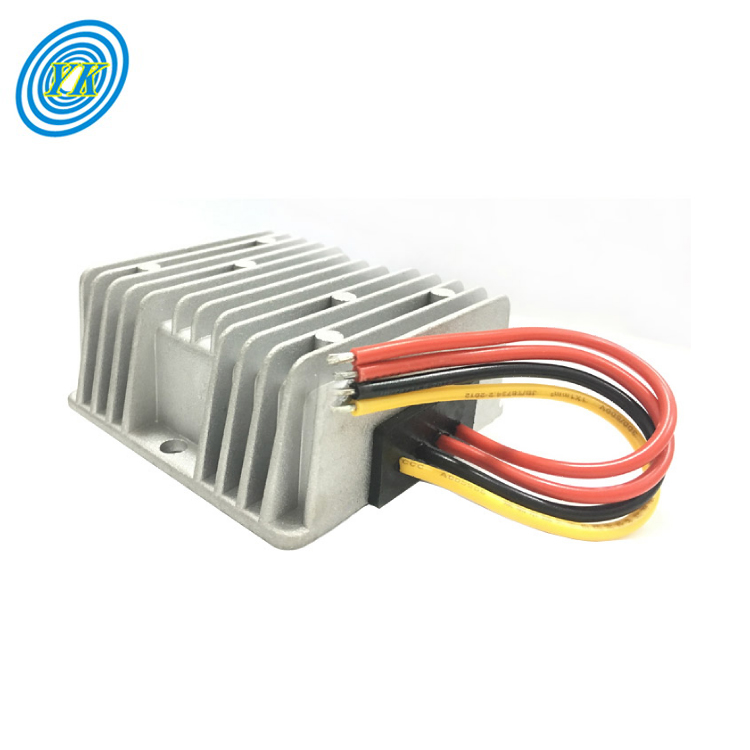
Boost Converters: Design, Simulation, Control, and Applications in Power Systems
Click: 709 Date: 03/20/2024 4::21::59 PM
Boost Converters: Design, Simulation, Control, and Applications in Power SystemsIn the quest to optimize efficiency in Boost Converter designs, the choice between synchronous and asynchronous topologies plays a pivotal role. Synchronous converters, which integrate a low-side power MOSFET to replace the external high-loss Schottky diode, offer superior efficiency by minimizing power dissipation. This is particularly advantageous in applications where power efficiency is paramount, such as in compact form factors where space is limited. The synchronous design not only enhances efficiency but also reduces the forward voltage drop across the diode, which is a significant factor in the overall performance of the converter.However, it's important to note that while synchronous converters excel in efficiency, they may introduce more noise to the load due to the use of two switching MOSFETs for power regulation. This dual-direction current flow in synchronous converters, which is a disadvantage compared to the unidirectional flow in nonsynchronous converters, necessitates the introduction of different operating modes to optimize performance across various load conditions.For instance, PWM @ CCM mode allows the converter to respond quickly to load changes, even down to zero load, while maintaining minimal output voltage ripple. This mode, however, offers lower efficiency at light loads. On the other hand, PWM @ DCM mode improves efficiency at light loads by preventing the inductor current from going negative, similar to nonsynchronous solutions. Additionally, PFM with hibernate mode enhances efficiency further by turning off both FETs to skip pulses at light loads, thereby achieving the best possible efficiency and the highest light-load efficiency.When designing a boost converter, selecting the appropriate PWM duty cycle is crucial. The duty cycle determines the maximum and minimum voltage levels that can be output from the converter, and its limits can be calculated based on the desired output voltage level and efficiency. For asynchronous converters, the forward voltage drop across the diode (VD) is a key factor to consider, as it directly impacts the efficiency of the converter.In summary, the choice between synchronous and asynchronous topologies for Boost Converters is a balanced decision that hinges on the specific requirements of the application, including efficiency, noise levels, and the need for compact designs. By carefully considering these factors and employing the right operating modes and component selections, designers can achieve the optimal performance for their power conversion needs.In the realm of boost converter design and simulation, a comprehensive understanding of various simulation and analysis techniques is crucial for validating the functionality and performance of these converters. These techniques encompass a broad spectrum of evaluations, from transient analysis to noise analysis, and even extend to parameter sweeps and Monte Carlo sensitivity checks. Each of these analyses plays a pivotal role in ensuring the converter operates efficiently and reliably under various conditions.Transient Analysis: This technique is essential for examining the output voltage and residual ripple on the output. By employing a PWM source for switching and an AC source with low amplitude and DC offset to simulate the input DC level with residual ripple, designers can gain insights into the converter's response to rapid changes in input voltage. This analysis is fundamental for assessing the converter's ability to maintain stable output voltage under varying load conditions.Noise Analysis: Conducted and induced noise can significantly impact the performance of any DC-DC converter. Therefore, it's imperative to evaluate the converter's immunity to such noise. This involves checking the converter's response to both conducted and induced noise, ensuring that the design minimizes the impact of these disturbances on the output voltage.Parameter Sweep: To qualify the effectiveness of passive components, a parameter sweep can be performed. This involves varying a range of component values while conducting other analyses, such as transient analysis and noise analysis. This method allows designers to identify the optimal component values that yield the best performance.Monte Carlo Sensitivity: This quick check is invaluable for determining the output's sensitivity to variances in component values. By simulating the impact of component value variations, designers can identify potential weak points in the design that may lead to unpredictable performance under different operating conditions.DC Sweep and Frequency Sweep: These analyses are crucial for extracting load lines for the switching transistors and understanding how the converter suppresses residual AC noise and low-frequency drift at the output. By examining the cut-off and roll-off of the output, designers can better comprehend the converter's performance under different operating frequencies.In summary, the simulation and analysis of boost converters involve a multifaceted approach that includes transient analysis, noise analysis, parameter sweeps, Monte Carlo sensitivity checks, DC sweeps, and frequency sweeps. Each of these techniques contributes to a comprehensive evaluation of the converter's performance, ensuring that the design meets the required specifications and operates efficiently under a wide range of conditions.In the realm of power electronics, the operation of Boost DC-DC Converters is a critical aspect of ensuring efficient and reliable power conversion. This article delves into the intricate world of control strategies and stabilization techniques that are pivotal for the optimal performance of these converters. We will explore the nuances of Pulse Width Modulation (PWM), the backbone of control systems, and the various optimization methods that enhance the stability and efficiency of Boost Converters.Pulse Width Modulation (PWM) in Boost ConvertersPWM is a cornerstone of control strategies for Boost Converters, serving as the foundation for generating switching signals that drive the power switches. The effectiveness of PWM in Boost Converters is contingent upon the selection of suitable modulation techniques, such as PWM itself, Space Vector Modulation (SVM), or Selective Harmonic Elimination (SHE). Each technique has its unique impact on the output waveform, switching frequency, switching losses, harmonic distortion, and electromagnetic interference. The choice of modulation technique is a critical decision that must align with the specific requirements and constraints of the system, ensuring that the converter operates within the desired performance parameters.Control Systems for Boost ConvertersThe control systems of Boost Converters are designed to achieve various objectives, such as voltage regulation, current control, power factor correction, maximum power point tracking, and harmonic mitigation. These objectives are met through the application of different control methods, including linear feedback control, nonlinear control, sliding mode control, and predictive control. Each method offers its own set of advantages and disadvantages in terms of stability, robustness, complexity, and performance. The selection of the appropriate control method is a critical step in optimizing the converter's operation, necessitating a thorough evaluation of the system's requirements and limitations.Optimization Techniques for Boost ConvertersOptimization plays a pivotal role in fine-tuning the parameters and settings of Boost Converters to achieve near-optimal performance. Tools and methods such as simulation tools (e.g., MATLAB/Simulink, PLECS, PSIM), analytical tools (e.g., Fourier analysis, Bode plots, Nyquist plots), and numerical tools (e.g., optimization algorithms, genetic algorithms, particle swarm optimization) are employed to model, test, and analyze the system under various conditions. These tools help in identifying the optimal values for system parameters, such as gains, bandwidths, or switching frequencies, thereby enhancing the converter's efficiency and stability.Feedback and Monitoring in Boost ConvertersFeedback and monitoring mechanisms are essential for ensuring the reliability and performance of Boost Converters. These mechanisms detect and correct any errors or deviations in the system, such as sensor noise, measurement errors, load changes, or disturbances. By using feedback sensors (e.g., voltage sensors, current sensors, power sensors) and monitoring devices (e.g., oscilloscopes, spectrum analyzers, power analyzers), the system's output variables can be measured and compared with reference values, ensuring that the converter operates within the desired performance parameters.Continuous Improvement for Boost ConvertersContinuous improvement is a process of constantly seeking and implementing ways to enhance and optimize Boost Converters. This involves the application of continuous improvement techniques, such as the plan-do-check-act (PDCA) cycle, root cause analysis, or Kaizen, to identify and eliminate the sources of waste, variation, or inefficiency in the system. Continuous improvement tools, such as quality function deployment (QFD), failure mode and effects analysis (FMEA), or design of experiments (DOE), are used to prioritize and optimize the features and functions of the system, ensuring that the converter remains at the forefront of power conversion technology.In conclusion, the control strategies and stabilization techniques for Boost DC-DC Converters are a complex interplay of modulation techniques, control systems, optimization methods, feedback and monitoring mechanisms, and continuous improvement principles. By understanding and applying these strategies, engineers can design and operate Boost Converters that are efficient, stable, and reliable, meeting the demands of modern power systems.Boost converters play a pivotal role in power systems, particularly in the context of energy storage, microgrids, and renewable energy integration. This article delves into the applications and challenges associated with boost converters in these areas, highlighting their significance in enhancing power reliability, reducing energy costs, and promoting environmental sustainability.Applications of Boost Converters in Power SystemsBoost converters are integral to the operation of microgrids, which are localized power systems that can operate independently of the main grid. These converters enable the efficient integration of renewable energy sources, such as solar and wind, into microgrids. By converting the variable voltage output of renewable energy sources to a higher voltage suitable for grid connection, boost converters facilitate the seamless integration of renewable energy into the power grid. This not only enhances the reliability of power supply but also supports the development of microgrids, which can provide a secure and cost-effective power source in areas where the main grid is unreliable or expensive.Moreover, boost converters contribute to the optimization of energy storage systems within microgrids. By managing the charging and discharging processes of energy storage units, these converters ensure that the stored energy is used efficiently, thereby reducing energy costs and improving energy efficiency. The integration of boost converters with energy storage systems is crucial for achieving the decarbonization goals of microgrids, as it allows for the flexible use of renewable energy sources and the storage of excess energy for later use.Challenges and OpportunitiesDespite their benefits, the use of boost converters in power systems presents several challenges. One of the primary challenges is ensuring the stability and reliability of microgrids. The dynamic nature of renewable energy sources and the complex interactions within microgrids can lead to stability issues. To address this, advanced control strategies and optimization techniques are required to ensure that the microgrid can operate reliably under various conditions.Another challenge is the integration of renewable energy sources with the main grid. The intermittent nature of renewable energy sources and the potential for grid instability can pose significant challenges. Boost converters can help mitigate these challenges by providing a stable interface between the microgrid and the main grid, ensuring that the grid can accommodate the variable output of renewable energy sources.Despite these challenges, the use of boost converters in power systems offers significant opportunities for improving power reliability, reducing energy costs, and promoting environmental sustainability. With ongoing research and development, it is expected that boost converters will play an increasingly important role in the future of power systems, contributing to the development of smart, sustainable, and resilient power systems.In conclusion, boost converters are a critical technology in the realm of power systems, particularly in the context of microgrids and renewable energy integration. Their role in enhancing power reliability, reducing energy costs, and promoting environmental sustainability underscores their significance in the evolving landscape of power systems. However, to fully realize their potential, it is essential to address the associated challenges through advanced control strategies and optimization techniques. As research in this area continues to advance, the role of boost converters in power systems is likely to become even more critical in the future.As we look towards the future of boost converter technology, several advancements are poised to revolutionize the efficiency, stability, and control strategies of these critical components in power systems. This article explores the potential improvements and innovations that could shape the landscape of boost converter technology, focusing on the integration of advanced control strategies, enhancements in efficiency and stability, and the exploration of new applications and challenges.Enhancing Efficiency and StabilityOne of the most promising areas for future advancements in boost converter technology is the pursuit of higher efficiency and improved stability. Traditional boost converters have been a cornerstone of power electronics, enabling the conversion of lower voltage DC sources to higher voltage DC outputs. However, the efficiency of these converters can be significantly improved, especially in applications where power loss is a critical factor. Research is underway to develop boost converters that operate at higher frequencies, which can reduce the size of the components and improve the efficiency of the conversion process. Additionally, advancements in control strategies, such as the integration of adaptive control techniques and the use of advanced algorithms, are expected to enhance the stability of boost converters under varying load conditions.Integration of Advanced Control StrategiesThe integration of advanced control strategies is another area where future developments in boost converter technology are expected to make significant strides. Traditional control strategies, such as PWM (Pulse Width Modulation) and PI (Proportional-Integral) controllers, have been widely used in boost converters. However, these methods have limitations, particularly in terms of response time and adaptability to changes in the load and input voltage. The development and implementation of more sophisticated control strategies, such as sliding mode control (SMC) and fuzzy logic control, are anticipated to offer improved performance in terms of efficiency, stability, and response time. These advanced control strategies can enable boost converters to operate more efficiently and reliably, making them more suitable for applications in renewable energy systems and microgrids.Exploring New Applications and ChallengesAs boost converter technology continues to evolve, new applications and challenges are emerging. The integration of boost converters in microgrids and renewable energy systems presents exciting opportunities for future research. Microgrids, which are localized grids that can operate independently of the main grid, require reliable and efficient power conversion solutions, and boost converters can play a crucial role in these systems. Similarly, the increasing adoption of renewable energy sources, such as solar and wind power, necessitates the development of boost converters that can efficiently convert the variable output of these sources to a stable DC output. However, these applications also present challenges, including the need for robust control strategies to manage the variability of renewable energy sources and the integration of boost converters in complex power systems.ConclusionThe future of boost converter technology holds great promise, with potential advancements in efficiency, stability, and control strategies. As researchers and engineers continue to explore these areas, it is anticipated that boost converters will play an even more critical role in power systems, contributing to the development of more efficient, reliable, and sustainable energy solutions. The integration of advanced control strategies, coupled with the exploration of new applications and the overcoming of existing challenges, will be key to realizing the full potential of boost converter technology in the years to come.
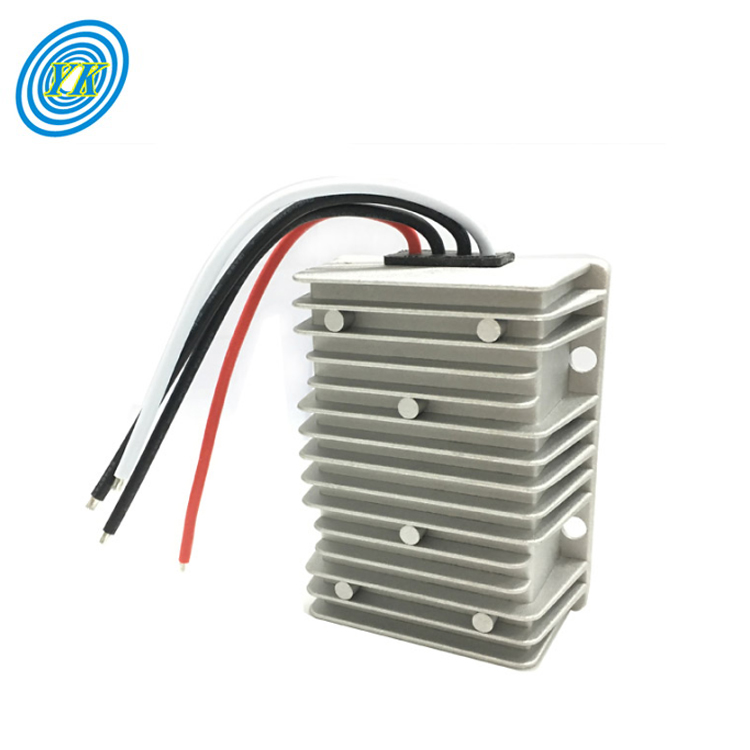
Mastering Buck/Boost DC-DC Converters: From Fundamentals to Advanced Applications
Click: 680 Date: 03/18/2024 10::44::57 AM
Mastering Buck/Boost DC-DC Converters: From Fundamentals to Advanced ApplicationsUnderstanding the Basics: Buck and Boost ConvertersBuck and Boost converters are pivotal components in power electronics, offering a flexible solution for voltage regulation by either stepping up or stepping down the input voltage to meet the demands of the load. These converters are essential in a variety of applications, including managing voltage levels in battery-operated devices for optimal performance, regulating power in renewable energy systems like solar panels and wind turbines, and ensuring voltage stability in automotive electronics for electric and hybrid vehicles.The fundamental operation of a Buck and Boost converter involves two distinct modes: Buck mode, where the output voltage is lower than the input, and Boost mode, where the output voltage is higher. The converter switches between these modes to control the output voltage as required. Key components include an inductor, a diode, a switch (typically a transistor), and a capacitor. The switch alternates between the two modes, while the inductor and capacitor store energy during each mode, ensuring a smooth output voltage.Buck and Boost converters offer several advantages, such as versatility, high efficiency (up to 95% or higher), and compact size due to the use of smaller components at higher switching frequencies. However, they also come with challenges, including increased complexity in design and operation, and the potential for generating electromagnetic interference (EMI) and noise at high frequencies.Designing an efficient Buck and Boost converter requires careful consideration of factors like input and output voltage levels, load current, switching frequency, and component selection. For instance, a higher switching frequency allows for the use of smaller inductors and capacitors, reducing the overall size of the converter. Yet, higher frequencies may also increase switching losses, affecting the converter’s efficiency. Component selection is crucial for determining the converter’s performance, with the choice of inductor, capacitor, diode, and switch based on their voltage and current ratings to ensure reliable operation.In conclusion, Buck and Boost converters play a vital role in various power conversion applications by offering the flexibility to adjust voltage levels as required. Their versatile nature, high efficiency, and compact design make them an attractive solution for a wide range of industries, including consumer electronics, renewable energy systems, and automotive applications. However, it is essential to carefully consider the design aspects, component selection, and potential trade-offs to ensure optimal performance and reliability.In the realm of Buck and Boost converters, the core components that drive the conversion process are semiconductors, energy storage elements, and filters. These elements play pivotal roles in the operation of these converters, enabling them to efficiently transform voltages from one level to another.Semiconductors: At the heart of Buck and Boost converters are semiconductor devices, such as diodes and transistors. These components are crucial for the switching mechanism that controls the flow of current and energy storage. In modern Buck converters, a second transistor is often used instead of a diode for synchronous rectification, enhancing efficiency and reducing power loss.Energy Storage Elements: Inductors and capacitors are the primary energy storage elements in Buck and Boost converters. The inductor stores energy during the on-state of the converter, while the capacitor discharges this energy to the output load during the off-state. This energy transfer process is fundamental to the operation of these converters, allowing for the regulation of output voltage levels.Filters: To reduce voltage ripple and ensure a smooth output voltage, filters are employed. These filters, typically consisting of capacitors and inductors, are placed at the input and output ends of the converter. They help in stabilizing the output voltage by smoothing out the fluctuations caused by the switching process.The interplay between these components is what enables Buck and Boost converters to perform their voltage conversion tasks with high efficiency. The semiconductors control the switching process, the energy storage elements facilitate the energy transfer between the input and output, and the filters ensure a stable output voltage. Together, they form the backbone of these converters, making them indispensable in a wide range of applications, from powering LEDs and electric vehicles to enhancing battery life in portable devices.To enhance the performance of Buck and Boost converters, particularly in reducing voltage ripple and improving efficiency, several strategies can be employed. These strategies not only focus on the selection of appropriate components but also on the design and implementation of effective filtering mechanisms.Reducing Voltage Ripple in Flyback Converters: Flyback converters, known for their isolation between input and output, can experience significant voltage ripple, especially in high-power output systems. One method to mitigate this issue is by adding an additional output stage of LC (Inductor-Capacitor) filtering circuit. This approach significantly reduces output ripple by leveraging the inductor and capacitor to smooth out the voltage fluctuations. For instance, a Flyback converter operating at 5V with an 8A load and an input of 200V can benefit from a second-stage LC filter, which can greatly reduce the output voltage ripple without the need for parallel capacitors.Optimizing Inductor and IC Matching for Buck Converters: The efficiency and power loss in Buck converters are significantly influenced by the MOSFETs and the inductor. To achieve the highest efficiency, it's crucial to ensure that the switching elements and inductors are state-of-the-art, coupled with high-performance components. The best match between an inductor and an IC is paramount for achieving optimal performance in terms of PCB space, thermal efficiency, and cost-efficiency. This involves selecting an inductor that matches the DC resistance of the MOSFETs, ensuring that the conduction losses from the MOSFETs are minimized and that the DC power losses are optimized .Minimizing Power Losses in Buck Converters: The efficiency of a Buck converter can be significantly improved by minimizing power losses. This involves selecting the right inductor and MOSFETs that have low on-resistance and high saturation current. The diameter of the enameled copper wire in the inductor coil, which forms the core of the inductor, plays a crucial role in determining the DC resistance, DC loss, and the inductor's rated current. Choosing a good compromise between the package size and rated current is essential for a successful Buck converter design, aiming for a temperature rise of 20°C to 30°C for average operating conditions .Improving Efficiency through Component Selection: The selection of suitable components, including the right inductor and MOSFETs, is critical for achieving high efficiency in Buck converters. The DC resistance of the inductor should match the ratio of the MOSFETs’ RDS(ON) to minimize losses and achieve an efficient compromise between size, performance, and cost. Modern buck converters and inductors are available with DC and conduction resistances in the tens of mΩ range, allowing for an optimal match that helps achieve outstanding performance .Addressing Saturation Current and Inductance: The saturation current (ISAT) and inductance (L) of the inductor are critical parameters in the design of Buck converters. The saturation current should exceed the peak current to ensure efficient operation. The inductance, calculated based on the duty cycle, output voltage, switching frequency, and ripple current, plays a significant role in determining the converter's efficiency. Starting with a 30% to 40% ripple current is a common practice, leading to a nominal inductance that can be calculated using specific equations .In summary, optimizing the performance of Buck and Boost converters involves a combination of strategic component selection, effective filtering mechanisms, and careful consideration of design parameters such as saturation current and inductance. By implementing these strategies, it's possible to significantly reduce voltage ripple and improve the overall efficiency of these converters.Buck and Boost converters play a pivotal role in the modern electronics landscape, serving as the backbone of power management in a wide array of devices. Their ability to efficiently convert and regulate voltage makes them indispensable in various applications, from everyday consumer electronics to cutting-edge technologies.Illuminating the Future: Powering LEDs - In the realm of lighting, Buck and Boost converters enable the use of LEDs in a more versatile manner. By stepping down voltage for low-power applications or stepping up voltage for high-brightness LEDs, these converters ensure that LEDs can be used in a wide range of lighting fixtures, from small, portable devices to large, high-intensity lighting systems. This versatility not only enhances the energy efficiency of LED lighting but also opens up new design possibilities for lighting solutions.Propelling Electric Vehicles: The Role of Converters - In the electric vehicle (EV) industry, Buck and Boost converters are crucial for managing the complex power requirements of electric motors. These converters enable the efficient conversion of battery voltage to the voltage required by the motor, ensuring optimal performance and efficiency. Moreover, they facilitate the integration of various power sources, such as solar panels or wind turbines, into EVs, contributing to the development of sustainable and flexible energy solutions for transportation.Revitalizing Battery Life: Enhancing Portable Devices - For portable devices, Buck and Boost converters play a critical role in extending battery life. By efficiently managing the voltage supplied to the device's components, these converters reduce power consumption, allowing for longer battery life. This is particularly important in the era of smartphones and wearable technology, where battery efficiency is a key selling point. The use of these converters in portable devices not only improves user experience by extending battery life but also contributes to the overall energy efficiency of the device.In summary, Buck and Boost converters are integral to the advancement of modern electronics, enabling the development of more efficient, versatile, and sustainable power solutions across a wide range of applications. Their role in powering LEDs, electric vehicles, and enhancing battery life in portable devices underscores their significance in the field of electronics and beyond.
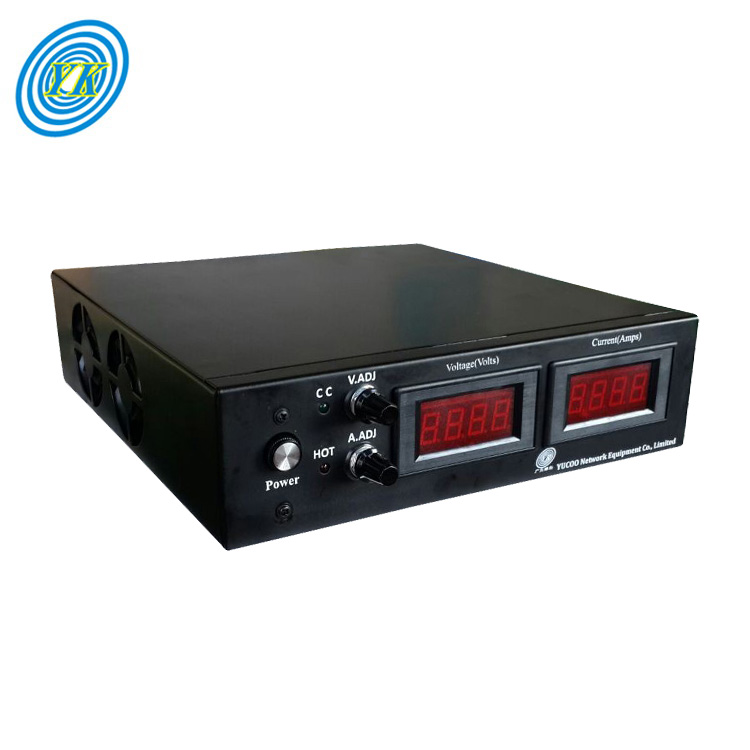
Understanding and Utilizing Adjustable DC Power Supplies: A Comprehensive Guide
Click: 682 Date: 03/15/2024 10::21::26 AM
Understanding and Utilizing Adjustable DC Power Supplies: A Comprehensive GuideExploring the various types of DC power supplies, including linear and switching power supplies, and their applications across different fields such as electronics prototyping, circuit testing, and laboratory research, we delve into the intricacies of power conversion and its significance in modern technology.Linear Power Supplies: Linear power supplies, characterized by their simplicity and reliability, are often used in applications where efficiency is not a critical factor. They operate by transforming the input voltage to the desired output voltage through a series of components, including resistors, capacitors, and inductors. This method ensures a stable output voltage but at the cost of lower efficiency compared to switching power supplies. Linear power supplies are commonly found in benchtop power supplies and battery eliminators, where their predictable performance is valued over efficiency.Switching Power Supplies: Switching power supplies, on the other hand, are known for their high efficiency and compact size. They achieve this by using a switching system that rapidly switches the input voltage on and off, followed by a filtering system to smooth out the output. This approach allows for the conversion of high input voltages to lower output voltages, making them ideal for applications requiring high efficiency, such as in portable electronics and renewable energy systems. Switching power supplies are also preferred for their ability to regulate both voltage and current, ensuring stable operation of electronic devices.Applications in Electronics Prototyping: In the realm of electronics prototyping, both linear and switching power supplies play crucial roles. Linear power supplies are favored for their simplicity and ease of use, making them suitable for beginners and for projects where the exact voltage level is known and stable. Switching power supplies, with their efficiency and ability to regulate voltage and current, are preferred for more complex projects requiring precise control over power levels.Circuit Testing and Laboratory Research: For circuit testing and laboratory research, the choice between linear and switching power supplies often depends on the specific requirements of the test or experiment. Linear power supplies offer a straightforward and predictable output, making them ideal for testing circuits that require a stable voltage source. Switching power supplies, with their high efficiency and adjustable output, are preferred for testing circuits that require precise voltage and current control, such as in power electronics and renewable energy research.Conclusion: Understanding the differences between linear and switching power supplies, and their applications in various fields, is essential for engineers and technicians. Whether the need is for a simple, reliable power source for prototyping or a high-efficiency, compact solution for complex applications, the choice of power supply can significantly impact the success of a project. By selecting the appropriate type of power supply, users can ensure that their electronic devices and circuits operate efficiently and reliably.In the realm of DC power supplies, the foundational principles that govern their design and operation are multifaceted, encompassing a range of components and mechanisms that work together to ensure a stable and reliable power output. Here's a creative reinterpretation of these principles:Voltage Regulation and StabilityAt the heart of any DC power supply is the quest for stable voltage output. This stability is crucial for the performance of electronic devices, which can be adversely affected by fluctuations in power supply voltage. The process of maintaining a constant voltage, even under varying load conditions, is a key aspect of power supply design. This involves understanding the impact of load resistance and the use of voltage dividers to manage voltage drops effectively.Transformers and Rectifiers: The Power Conversion PathwayThe journey from AC to DC involves several critical steps. Initially, a transformer is employed to adjust the input voltage to a level suitable for the DC circuit, offering isolation as a bonus. This is followed by the rectification process, where diodes convert the AC signal into a DC signal, effectively eliminating the negative half of the waveform. This conversion is essential for ensuring that the output is a pure DC signal, free from the oscillations of AC.Smoothing and Stabilization TechniquesAfter rectification, the output signal still contains ripples, which are rapid fluctuations in voltage. To achieve a smooth and stable DC output, smoothing circuits using inductors and capacitors are employed. These components work together to filter out the ripples, providing a cleaner and more stable voltage output. Additionally, electronic stabilizers are used to further refine the output voltage, ensuring it remains constant over time.The Role of Key Components in RegulationWithin the regulation process, several key components play pivotal roles. The control element, often a transistor, acts as a variable resistor, adjusting its resistance based on the output voltage to maintain stability. The sensing element monitors the output voltage, providing feedback to the control element to make necessary adjustments. The reference element sets the benchmark voltage against which the output voltage is compared, ensuring that the output remains within the desired range.Design Considerations for Optimal PerformanceWhen designing a DC power supply, it's essential to consider the specific requirements of the application, including the desired output voltage and current. This involves selecting the appropriate transformer for voltage adjustment, choosing the right rectifier for efficient AC to DC conversion, and designing the smoothing and stabilization circuits to achieve the desired output characteristics. Additionally, the power supply must be designed to handle the expected load conditions, ensuring it can provide a stable output under various operating conditions.In summary, the design and operation of DC power supplies are underpinned by a deep understanding of voltage regulation, the conversion process from AC to DC, the role of key components in maintaining output stability, and the consideration of design parameters to ensure optimal performance. These principles form the bedrock of power supply technology, enabling the reliable and efficient operation of a wide range of electronic devices.DC power supplies are equipped with a variety of safety and protection features to ensure the safety of both the power supply and the connected circuits. These features include:Overcurrent and Overvoltage Protection: DC power supplies are designed with built-in mechanisms to protect against overcurrent and overvoltage conditions. These mechanisms can include fuses, circuit breakers, and overload protection circuits that disconnect the power supply from the circuit when the current or voltage exceeds safe levels, preventing damage to the power supply and the connected circuits.Temperature Management: To prevent overheating, DC power supplies often include cooling mechanisms such as fans or heat sinks. These features help dissipate heat generated during operation, ensuring that the power supply operates within its safe temperature range.Grounding and Isolation: Proper grounding and isolation are crucial for safety. Grounding helps prevent electric shock by connecting the power supply to a common ground, while isolation prevents electrical leakage between the power supply and the connected circuits.Input and Output Protection: DC power supplies may include protection features for both the input and output sides. Input protection can include surge protection to guard against voltage spikes, while output protection can include overload and short circuit protection to prevent damage to the power supply and the connected circuits.User Interface and Controls: The user interface of a DC power supply often includes safety features such as lockouts to prevent accidental operation and indicators to show the status of the power supply, including whether it is overloaded or under voltage.These safety and protection features are essential for ensuring the safe and reliable operation of DC power supplies, protecting both the power supply itself and the circuits it powers.The user interface and control options in DC power supplies are designed to provide users with a comprehensive and intuitive way to manage voltage and current settings. These interfaces range from simple front panel controls to sophisticated software solutions that offer advanced features and flexibility.Graphical User Interface (GUI): The Adaptive Power Systems DC Power Supply Windows control software features a GUI that offers a user-friendly way to control all functions and settings. This includes setting voltage, current, and control mode directly from the main screen. The software is designed to be compatible with both Windows 7 and Windows 8.1, leveraging modern software design principles and 64-bit technology to ensure smooth operation and efficient data querying Comprehensive Model Support: The GUI program is versatile, supporting all Adaptive Power Systems DC Power Supply models. This means that users only need one program to manage a wide range of applications, simplifying the setup and operation processAdvanced Software Design: Developed in C# on the Microsoft Visual Studio platform, the software is designed to take full advantage of advanced functions like multi-threading. This allows for the background querying of measurement data while the user interacts with the program, enhancing the overall user experienceKey Features: The software offers a range of features including the ability to control all power supply functions, retrieve, display, and store measurement data, support for all APS DC Power Supply models, and the creation, saving, editing, and execution of test scripts. It also supports USB, RS232, GPIB, and LAN interfaces, making it compatible with various operating systems and communication protocols Built-in Simulation Mode: As a useful operator training tool, the software includes a built-in simulation mode. This feature allows users to practice and familiarize themselves with the software's functionalities without the need for a physical power supply, enhancing safety and efficiency in the learning process In summary, the user interface and control options in DC power supplies, particularly those offered by Adaptive Power Systems, are designed to provide users with a comprehensive, flexible, and user-friendly way to manage their power supply settings. From the graphical user interface to the advanced software design and built-in simulation mode, these features ensure that users can effectively control their power supplies, regardless of their level of expertise.In the realm of DC power supplies, the future is brimming with innovation and advancement. Here's a creative reinterpretation of the key points and future directions, reimagined for a fresh perspective:Innovative Power Supply DesignsThe evolution of power supply technology is marked by a shift towards more compact and efficient designs. This trend is driven by the need for power supplies that can fit seamlessly into smaller devices, such as wearables, without compromising performance or efficiency. The integration of advanced technologies like Gallium Nitride (GaN) is paving the way for power supplies that are not only more efficient but also capable of operating at higher frequencies, enabling faster response times and reducing electromagnetic interference.Digital Control and ProgrammabilityThe integration of digital control into power supplies is revolutionizing how we manage and utilize power. By leveraging digital signal processing techniques, power supplies can achieve more precise control over voltage and current waveforms, leading to improved efficiency and performance. This also opens up new possibilities for programmability, allowing power supplies to adapt dynamically to changing load conditions, making them more versatile and future-proof.Sustainability and Renewable Energy IntegrationAs the world moves towards cleaner energy sources, the demand for power supplies that can efficiently convert and regulate power from renewable sources is growing. This trend is particularly significant in the context of sustainability and renewable energy, as power supplies play a crucial role in enabling the widespread adoption of renewable energy systems. The future of power supplies is likely to see a greater emphasis on sustainability, with advancements in wide-bandgap semiconductors, smart features, and digital control algorithms driving innovation in this area.High-Power Density and MiniaturizationThe demand for compact and high-power density power supplies is on the rise, driven by the need for power supplies that can meet the requirements of space-constrained applications. This trend is particularly evident in industries such as wearables, where size and weight considerations are paramount. The development of modular and scalable power supply architectures allows for easy customization, expansion, and reconfiguration to adapt to changing system requirements and applications.Advancements in Efficiency and ReliabilityThe efficiency of AC/DC switching power supplies is largely due to their ability to rapidly switch the input voltage on and off, employing high-frequency switching to achieve much higher efficiency compared to linear power supplies. The use of switching power supplies minimizes heat dissipation, reducing the need for complex cooling systems. Furthermore, advancements in digital control algorithms will continue to enhance the performance and reliability of switching power supplies, ensuring optimal power delivery and prolonging the lifespan of devices.
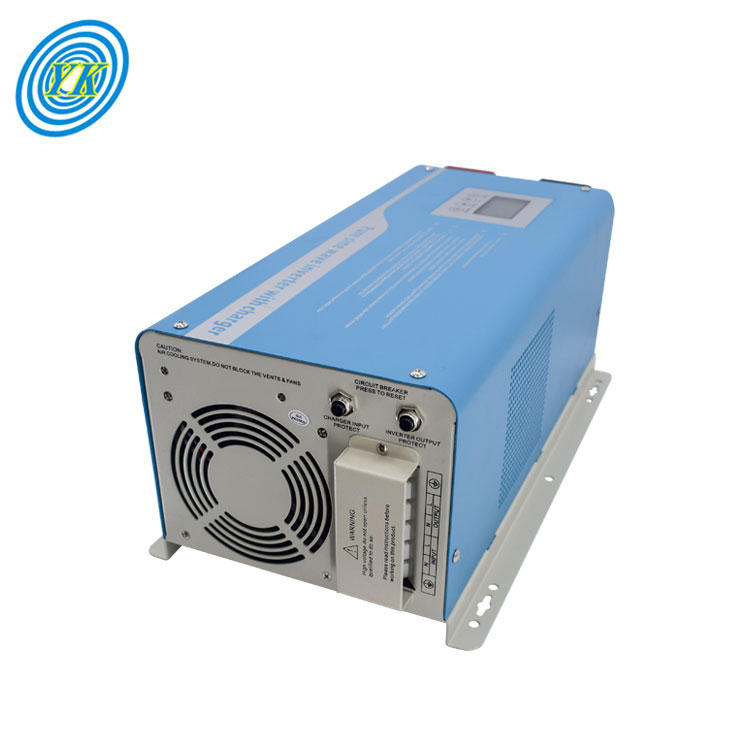
Click: 681 Date: 03/04/2024 3::26::53 PM
Exploring the Innovative Landscape of Low Frequency Inverters with Chargers: Technology, Applications, and Market InsightsInverter technology, particularly the low-frequency variety, plays a pivotal role in converting direct current (DC) power into alternating current (AC) power, enabling the operation of household appliances and backup power systems in off-grid conditions. This conversion is essential for utilizing solar power or other renewable energy sources, as these systems typically output DC power.Low-frequency inverters operate at a frequency of 50 or 60 Hz, matching the standard frequency of the AC electricity grid. This characteristic is crucial for providing power to devices that are designed to operate on the grid's frequency, ensuring compatibility and optimal performance.Efficiency is a key aspect of inverter technology. High-frequency inverters, while efficient and compact, may struggle with sudden power surges due to their lower surge capacity. In contrast, low-frequency inverters are designed to handle higher power demands more effectively, making them more suitable for applications requiring a stable and reliable power supply.The size and weight of inverters are also significant considerations. High-frequency inverters are compact and lightweight, making them ideal for portable applications. However, low-frequency inverters, while larger, offer superior performance and reliability, especially in environments where stability and continuous power are critical.In summary, the choice between low-frequency and high-frequency inverters depends on the specific requirements of the application, including power demand, compatibility with devices, and the need for portability versus reliability.Low frequency inverters are versatile tools that find applications across various sectors due to their ability to convert DC power into AC power, making them suitable for a wide range of uses. Here's a reimagined overview of their applications, avoiding direct quotes from the sources:Tool Battery Charging: These inverters are commonly used for charging batteries in tools, providing the necessary AC power for tool batteries, which are typically DCPowering Small Appliances: Low frequency inverters are ideal for running small appliances that require AC power, such as refrigerators, air conditioners, and other household itemsA/V and Computer Usage: They are particularly useful in environments where AC power is needed for audio-visual equipment and computers, providing a reliable power sourceIndustrial Applications: Beyond household use, low frequency inverters are also employed in industrial settings, such as in the operation of pumps, motors, and other high-torque tools, where their robust design and efficiency make them suitable for long-term useRenewable Energy Systems: In the realm of renewable energy, low frequency inverters play a crucial role in converting DC power from solar panels or wind turbines into AC power for home use or grid connection, facilitating the integration of renewable energy sources into the electrical grid.These applications highlight the versatility and adaptability of low frequency inverters, making them indispensable in a range of settings from everyday household use to more complex industrial and renewable energy applications.Charger systems and battery management are integral components in the modern landscape of power technology, especially in the context of renewable energy and electric vehicles. A charger system is designed to safely and efficiently charge a battery, ensuring it operates within its safe operating area. This involves monitoring the battery's state, including its voltage, temperature, and charge level, to prevent overcharging or overheating. The charger system may also include features for balancing the charge across cells in a battery pack, ensuring all cells are charged evenly to prolong battery life and optimize performance.Battery management systems (BMS) are electronic systems that control and monitor the operation of a battery. They are crucial for ensuring the battery is used safely and efficiently, protecting it from conditions that could lead to damage or failure. A BMS typically includes functionalities such as monitoring cell voltages and temperatures, managing the charging process, and balancing the charge across cells in a battery pack. It may also include features for battery authentication, ensuring the BMS is connected to an authorized battery pack, and protection against transient events, such as sudden voltage spikes that could damage the battery or the BMS itself.In essence, charger systems and battery management are about ensuring that batteries are used safely and efficiently, balancing the need for power with the importance of protecting the battery's health and longevity. This involves careful monitoring and control of the battery's state, including its voltage, temperature, and charge level, as well as managing the charging process to ensure it is carried out safely and effectively.Power quality and safety features are crucial components of low frequency inverters with chargers, ensuring reliable operation and protecting both the inverter and the devices it powers. These features can be categorized into several key areas:Voltage Stability: Inverters must maintain a stable output voltage to prevent fluctuations that could damage connected devices or lead to performance issuesHarmonic Reduction: Inverters often include harmonic reduction technology to minimize distortion in the power output, which can interfere with electronic devices and cause inefficienciesProtection Mechanisms: Safety features such as overvoltage, overcurrent, and short circuit protection are essential to prevent damage to the inverter and the connected devicesGround Fault Protection: This feature detects and isolates faults, protecting both the inverter and the electrical system from ground faultsSoft Start and Soft Stop: These features gradually increase or decrease power output, reducing stress on the inverter and the connected devices, and minimizing wear and tearInsulation Monitoring: Inverters often include insulation monitoring to detect signs of wear in the insulation, allowing for timely repairs to prevent failuresTemperature Control: Inverters may include cooling systems to manage heat generation, which is a common issue with high-power devices. Proper temperature control helps in maintaining the inverter's performance and lifespanData Protection: Inverters with chargers may also include data protection features to secure sensitive information, such as user settings or usage dataIn summary, power quality and safety features in low frequency inverters with chargers are designed to ensure reliable power supply and protect against potential hazards, enhancing the overall performance and longevity of the system.Market Trends and StandardsThe global market for low frequency inverters with chargers is experiencing significant growth, particularly in regions like the Asia-Pacific. This expansion is largely driven by the increasing demand for solar energy, which necessitates the use of efficient and reliable inverters to convert DC power from solar panels to AC power suitable for household use or grid connection.A key trend in the market is the dominance of the central inverters segment, which is expected to continue its growth trajectory. Central inverters are crucial for utility-scale applications, requiring precise voltage and frequency matching to the local electric grid. Manufacturers have responded to the diversity of grid standards by offering customizable parameters, with three-phase inverters being the most common. Innovations such as the 1+X central modular inverter, which can be combined into larger units and features interfaces for energy storage systems, reflect the market's move towards more versatile and efficient solutions.Government initiatives and commitments to renewable energy sources, such as the Paris Agreement, are also driving market growth. For instance, India's ambitious target of achieving 175 GW of renewable energy capacity by 2022, with a significant portion allocated to solar energy, underscores the importance of inverters in facilitating the integration of renewable sources into the grid.Standards play a critical role in ensuring the compatibility and efficiency of inverter systems. With the grid's increasing penetration of renewables and alternative forms of energy, there's a growing need for standards that can accommodate the high penetration of inverters. This includes revisions to existing standards like IEEE 1547™ and IEEE 2800™, which aim to enhance procedures for managing and correcting systems in the presence of high inverter penetration. These standards are essential for ensuring grid stability and reliability as the energy landscape evolves.In summary, the market for low frequency inverters with chargers is poised for continued growth, driven by the rising demand for solar energy, the need for efficient energy conversion at utility scales, and the evolving standards to support the integration of renewable energy sources into the grid.
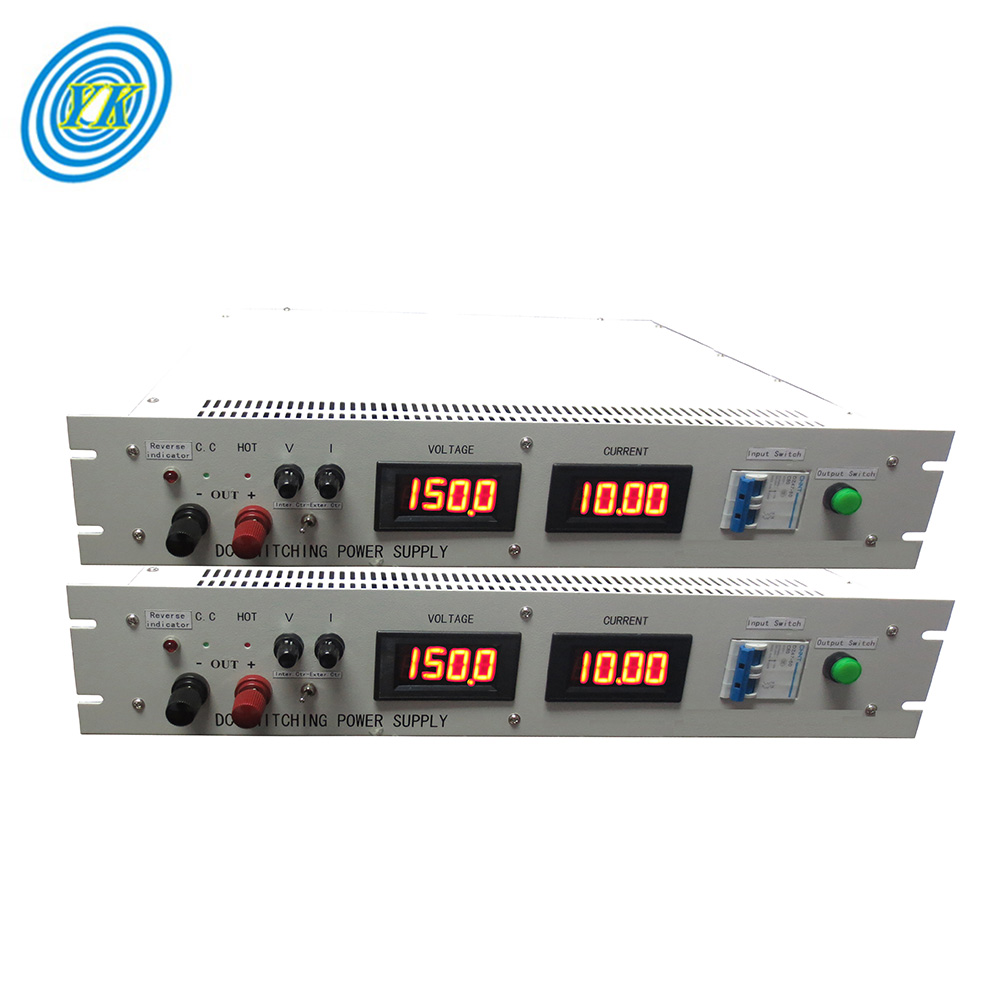
Click: 793 Date: 03/02/2024 10::21::05 AM
Comprehensive Guide to Adjustable DC Power Supplies: From Technical Specifications to User ExperienceIn the realm of power supply technology, understanding the principles of voltage regulation and adjustment is crucial, especially for those looking to optimize their adjustable DC power supply systems. This section will delve into the fundamental concepts of linear and switching voltage regulators, highlighting their distinct advantages and contributions to the functionality of adjustable DC power supplies.Linear Voltage Regulators: These are the cornerstone of many electronic power supplies, offering a straightforward approach to voltage regulation. They operate by using a voltage-controlled current source to maintain a steady output voltage, despite fluctuations in load current or input voltage. This reliance on a linear relationship between input and output voltage makes them highly predictable, though at the expense of efficiency, particularly in high-power applications. The simplicity and cost-effectiveness of linear regulators make them a preferred choice for low-power devices, such as audio and video equipment, where noise and efficiency are paramount.Switching Voltage Regulators (SMPS): Contrasting with linear regulators, SMPS are more complex but offer significant advantages in efficiency and size reduction. By using a high-frequency switching transistor to convert the input AC voltage to a regulated DC output, SMPS can achieve higher efficiency levels. This efficiency comes at the cost of slightly more complex design and potentially higher noise levels, making them less suitable for applications requiring low noise. However, their ability to manage larger power loads and operate over a wider input voltage range makes them ideal for a broad range of applications, including those requiring high power outputs.Key Contributions to Adjustable DC Power Supplies: The choice between linear and switching regulators in adjustable DC power supplies hinges on the specific requirements of the application. Linear regulators, with their simplicity and reliability, are often preferred for low-power applications where noise mitigation and thermal efficiency are critical. In contrast, switching regulators, with their higher efficiency and smaller form factor, are better suited for high-power applications where space and thermal management are concerns. The integration of both types of regulators in adjustable power supplies allows for a balance between performance, efficiency, and cost, tailoring the power supply to meet the exact needs of the device or system it supports.Conclusion: Understanding the nuances of linear and switching voltage regulators is essential for designing and optimizing adjustable DC power supplies. By leveraging the strengths of each type of regulator—linear for low-power, noise-sensitive applications and switching for high-power, space-constrained environments—designers can create power supplies that are both efficient and effective. This knowledge enables the development of power supplies that meet the specific requirements of various applications, from audio and video systems to industrial equipment, ensuring optimal performance and reliability.When discussing the specifications and safety features of a power supply, it's crucial to delve into several key aspects that define its functionality and ensure the safety of both the device and the user. These aspects include:Voltage and Current Ranges: Understanding the input and output voltage ranges is fundamental, as it determines the power supply's compatibility with different devices and its ability to safely operate under various conditions.Continuous Power Rating: This specification indicates the maximum power that the power supply can deliver continuously without overheating or failing. It's a critical factor for ensuring the power supply can handle the demands of the connected devices.Safety Features: Protecting the power supply and its users involves implementing safety features such as overvoltage, undervoltage, and overcurrent protection. These measures are designed to prevent damage to the power supply and connected devices by shutting down or limiting the power supply in case of unsafe conditions.EMI Compliance and Interference Reduction: To meet regulatory standards and ensure minimal interference with other electronic devices, power supplies must be designed to reduce conducted interference. This includes proper transformer design, the use of heat sinks, and filter design to achieve EMI compliance.Dynamic Response and Efficiency: The ability of a power supply to respond quickly to changes in load power and its efficiency (the ratio of output-to-input power) are critical for applications requiring fast dynamic response, such as high-speed microprocessors with power-management functions.By focusing on these specifications and safety features, power supply manufacturers and users can ensure that the power supply is not only capable of supplying the necessary power but also safe to use in various applications.In the design and components of adjustable power supplies, we delve into the intricate workings of these devices, focusing on the role of various elements in their operation. Key components such as power transformers, rectifier circuits, and filtering capacitors play crucial roles in the process. Additionally, the incorporation of heat sinks and fan cooling systems is essential for managing temperature and ensuring the efficient operation of these supplies.Power Transformers: These are used to step down high voltage AC mains input into a lower voltage AC output, which is then converted to DC by the rectifier circuit. This step is crucial in adjustable power supplies as it allows for the input of a wide range of AC voltages while maintaining a safe and manageable DC output voltage.Rectifier Circuits: Following the power transformer, the rectifier circuit converts the AC voltage into pulsating DC voltage. This is achieved by using a bridge rectifier, which ensures that the output voltage waveform is above the positive line, creating a pulsating DC voltage. This initial output is not smooth and requires further processing to achieve a stable DC output.Filtering Capacitors: To smooth out the pulsating DC voltage produced by the rectifier, filtering capacitors are used. These capacitors act to even out the fluctuations, creating a smoother waveform. This smoothing process is essential for ensuring a stable and reliable DC output voltage that can be adjusted according to the needs of the connected electronic device.Heat Sinks and Fan Cooling: The efficiency and reliability of adjustable power supplies are significantly impacted by the management of heat. Heat sinks are used to dissipate heat generated by the power supply components, preventing overheating and ensuring safe operation. In addition to heat sinks, fan cooling systems can be incorporated to further enhance cooling efficiency. This is particularly important for power supplies that handle high currents or operate under high loads, where heat generation can be substantial.By understanding and optimizing these components, adjustable power supplies can be designed to provide stable, efficient, and adjustable DC power for a wide range of electronic applications. The careful consideration of each component, from the initial AC input to the final DC output, ensures that these power supplies are both effective and reliable.The "Technical Support and User Manuals" section would encompass a variety of resources designed to assist users in effectively utilizing adjustable DC power supplies. This includes:Installation Guides: Detailed instructions on how to properly set up and connect the power supply, ensuring it meets the specific requirements of the user's application.User Manuals: Comprehensive guides that cover the operation, maintenance, and troubleshooting of the power supply. These manuals typically include information on setting voltage levels, monitoring performance, and identifying common issues.Troubleshooting Tips: Practical advice and solutions for common problems encountered with adjustable DC power supplies, such as voltage fluctuations, overheating, and malfunctioning components.Technical Support Options: Information on how to contact technical support teams for assistance with more complex issues. This can include phone support, email support, or access to online forums and communities where users can share their experiences and solutions.These resources are crucial for ensuring users can maximize the performance and longevity of their adjustable DC power supplies, while also addressing any issues that may arise during use.In the final section of our comprehensive guide, we delve into the market dynamics and product reviews for adjustable DC power supplies. This segment is crucial for potential buyers, as it provides insights into the current state of the market, product availability, and customer feedback.Market Overview:The global DC power supplies market is on a steady growth trajectory, with a projected revenue of US$ 626.47 million by 2033. This growth is driven by the increasing use of electronic devices and gadgets that operate on direct current, which necessitates the use of adjustable DC power supplies. The market is segmented by type, output power, application, and region, with North America, Europe, and Asia-Pacific emerging as key markets. The rise of electronic manufacturing companies in South East Asia has further boosted exports in this region, highlighting the market's dynamism and potential for growth 2.Product Reviews:User and professional reviews play a pivotal role in shaping the market's perception of adjustable DC power supplies. These reviews offer valuable insights into the product's performance, reliability, and suitability for various applications. For instance, adjustable DC power supplies have been praised for their efficiency, ease of use, and the ability to provide a stable output voltage, which is critical for a wide range of electronic devices. However, concerns have been raised regarding the durability of some models and the need for better safety features to protect against overvoltage and short circuits.Key Takeaways:The global DC power supplies market is experiencing significant growth, with a compound annual growth rate (CAGR) of 4.3% from 2023 to 2033.The market's growth is fueled by the rising demand for electronic devices and gadgets, as well as the increasing adoption of energy-efficient appliances in industrial setups.User and professional reviews highlight the importance of safety features, efficiency, and reliability in adjustable DC power supplies.The market's future growth prospects are positively influenced by the ongoing expansion of electronic manufacturing in South East Asia and the growing demand for energy-efficient appliances in developing economies.This section provides a comprehensive view of the market for adjustable DC power supplies, including an analysis of product availability, price ranges, and reviews from users and professionals in the field. It underscores the market's potential for growth and the importance of considering user feedback when selecting a power supply for specific applications.
